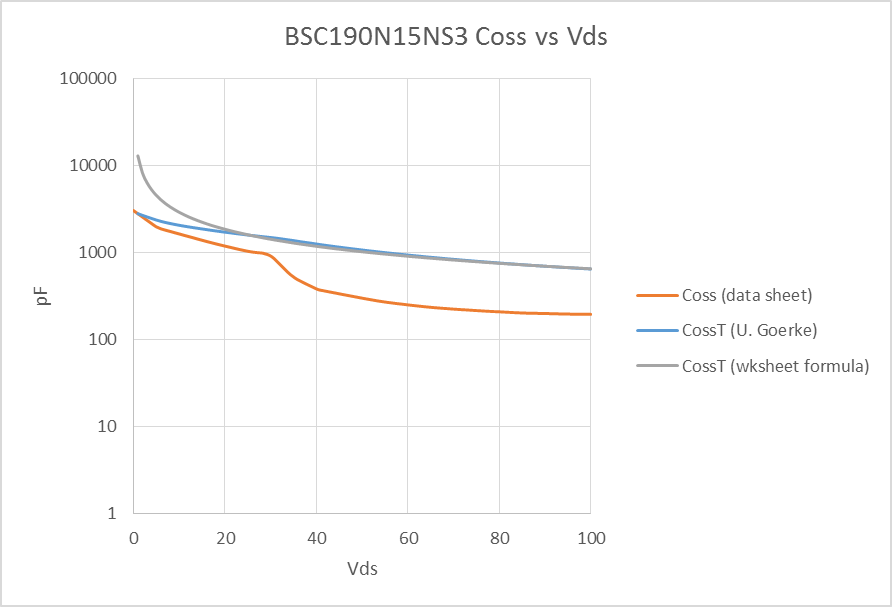Hello Ulrich,
Sorry to reopen this topic, but I can't reconcile the procedure you gave me with the formula in the "Neutron..." worksheet.
This is from the "Neutron..." worksheet:
I assume the term in the inner parentheses is the FET operating VDS at which you want to know Coss_SR_T.
I digitized the Coss curve from the FET data sheet and plotted it plus the two versions of time-related Coss, yours and from the formula above:
They are significantly different, as you can see. I'm attaching my spreadsheet with data & computations. Would you please take a look and see where I'm going wrong?
Thank you!





